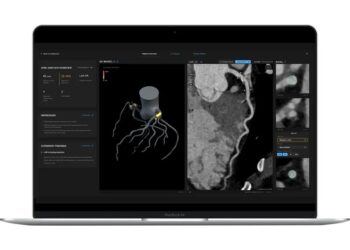### Beyond Scale: The Inevitable Rise of Specialized AI Models
For the past several years, the dominant narrative in artificial intelligence has been one of colossal scale. The race to build larger and larger language models, with parameter counts soaring from millions to billions and now into the trillions, has been fueled by a simple, powerful axiom: bigger is better. These monolithic “foundation models” have demonstrated breathtaking capabilities, mastering language, code, and reasoning in ways that have reshaped the technology landscape.
However, a powerful counter-current is emerging, driven not by the pursuit of sheer size, but by the practical demands of deployment, cost, and efficiency. We are witnessing a decisive shift from the “mainframe” era of AI—where immense computational power is centralized—to a more distributed, specialized, and accessible “PC” era. The future of AI isn’t just one giant brain in the cloud; it’s a diverse ecosystem of smaller, highly-optimized models tailored for specific tasks.
—
### The Cracks in the “Bigger is Better” Paradigm
While massive models are incredible research achievements, their practical application runs into three fundamental walls: cost, latency, and privacy.
**1. Prohibitive Inference Costs:**
Training a state-of-the-art foundation model costs hundreds of millions of dollars, but the real financial burden lies in inference—the cost of running the model to generate a response. Every query sent to a massive API incurs a computational cost, consuming significant energy and expensive GPU cycles. For businesses looking to integrate AI into high-volume applications, this recurring cost can be unsustainable, creating a significant barrier to widespread adoption.
**2. The Latency Bottleneck:**
For many real-world applications, speed is non-negotiable. An autonomous vehicle cannot wait two seconds for a decision, and a user-facing chatbot becomes frustrating if its responses lag. Large models, due to their sheer computational complexity, often introduce unacceptable latency. On-device or edge AI, where processing happens locally, requires models that are nimble enough to run instantly on consumer hardware like smartphones or laptops.
**3. Data Privacy and Sovereignty:**
In fields like healthcare, finance, and law, sending sensitive data to a third-party cloud API is a non-starter due to regulatory and privacy concerns. The only viable solution is to run models on-premise or directly on a user’s device, ensuring that confidential information never leaves a secure environment. This is simply impossible with a 1.5-trillion-parameter model.
### The Toolkit for Efficient, Specialized AI
Fortunately, the field is rapidly developing sophisticated techniques to create powerful models without relying on brute-force scale. This new engineering focus is on optimization and specialization.
* **Fine-Tuning:** Instead of training a massive model from scratch, developers can take a highly capable, mid-sized open-source model (like Mistral’s 7B or Meta’s Llama 3 8B) and continue training it on a smaller, domain-specific dataset. This process is computationally cheap and results in a model that is an “expert” in a particular field—be it legal contract analysis, medical diagnostics, or software development—often outperforming a much larger generalist model on its specialized tasks.
* **Quantization and Pruning:** These techniques are about making models leaner and faster. Quantization reduces the precision of the model’s numerical weights (e.g., from 32-bit floating-point numbers to 8-bit integers), drastically shrinking the model’s memory footprint and speeding up computation with minimal loss in accuracy. It’s analogous to compressing a high-resolution image into a smaller JPEG file; the essence is preserved, but the file size is a fraction of the original.
* **Architectural Innovation:** We’re also seeing new model architectures designed for efficiency from the ground up. Mixture-of-Experts (MoE) models, for example, are composed of many smaller “expert” sub-networks. For any given input, the model intelligently routes the request to only the most relevant experts, keeping the rest of the network inactive. This allows for models with a high total parameter count but a much lower computational cost at inference time.
—
### Conclusion: An Ecosystem of Intelligence
The era of monolithic AI is not ending, but its role is changing. The giant foundation models will continue to serve as powerful general-purpose utilities and as the starting point for creating their smaller, specialized descendants.
The real explosion of AI-powered applications will be driven by this new wave of efficient, specialized models. They will power intelligent features directly on your phone, run securely within a company’s private cloud, and enable real-time AI in everything from factory robots to personal vehicles. This shift democratizes access to AI, allowing more developers and businesses to build, deploy, and innovate without needing access to a supercomputer. We are moving from a world with a few AI behemoths to a rich, diverse ecosystem of intelligence, and that is a far more exciting future.
This post is based on the original article at https://techcrunch.com/2025/09/16/y-combinator-backed-rulebase-wants-to-be-the-ai-coworker-for-fintech/.






















